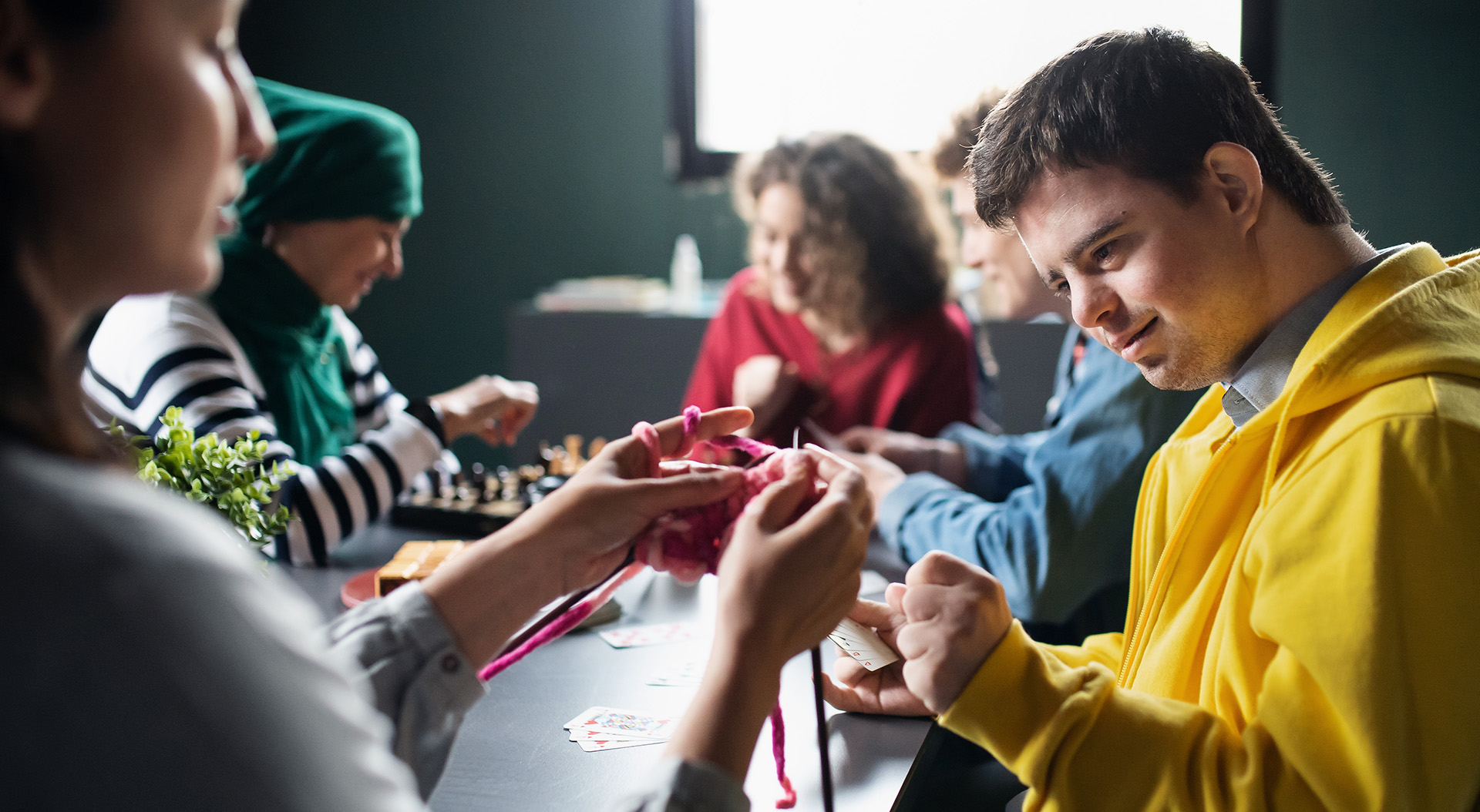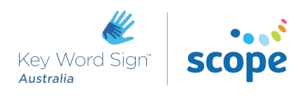To support the Participant’s ability to communicate more easily and effectively with their peers in educational, recreational, vocational and community settings (e.g. Scouts, day activities or an employment setting).
Key Word Sign supports which may help to achieve the goals
- Attendance for family members, teachers, support workers and other key communication partners at a Key Word Sign workshop.
- Coaching and ongoing direct support to communication partners.
- Provision of resources to assist participants and their supporters to learn signs, or improve signing accuracy and fluency.
- Provision of individualised resources to support and facilitate participation in everyday interactions using Key Word Sign.
Rationale for supports
The people who talk to and with the person with communication difficulties across their day, need to at least understand Key Word Signs. Imagine how discouraging and frustrating it would be to use Key Word Sign and gestures to try to get a message across and find that the people you are communicating to don’t understand you!
Creating a true communication environment means that, at the Participant’s school, not only the teachers and teacher’s aides understand Key Word Sign, but so do the other children in the class, and the person in the office, and the person at the school crossing.
Ideally, the people around the Participant will also use Key Word Sign and gesture themselves! Using the same mode of communication is a great way to acknowledge and validate the person with the communication difficulty.
Ensuring that adults around the child are using Key Word Sign all day every day is the most effective way to promote understanding and use of Key Word Sign by the child’s peers. Children learn through the examples they are provided by adults.
To support increased engagement and connection with school.
Key Word Sign supports which may help to achieve the goals
- Attendance for family members, teachers, support workers and other key communication partners at a Key Word Sign workshop.
- Coaching and ongoing direct support to communication partners.
- Provision of resources to assist participants and their supporters to learn signs, or improve signing accuracy and fluency.
- Therapy intervention.
- Provision of individualised resources to support and facilitate participation in everyday interactions using Key Word Sign.
Rationale for supports
Is important that all key communication partners at school (e.g. classroom teachers and teacher’s aides) are consistently using Key Word Sign within all interactions with the participant, and with their peers. Ideally, as many staff and children as possible should be able to understand and use Key Word Sign.
The use of Key Word Sign by everyone around the child helps to ensure that multimodal communication is being supported and validated by the whole school community.
To build the capacity of a participant with severe and multiple disabilities to understand and take advantage of opportunities to express their preferences and to exercise choice and control across everyday activities.
Key Word Sign supports which may help to achieve the goals
- Attendance for family members, teachers, support workers and other key communication partners at a Key Word Sign workshop.
- Coaching and ongoing direct support to communication partners.
- Provision of resources to assist participants and their supporters to learn signs, or improve signing accuracy and fluency.
- Therapy intervention.
- Provision of individualised resources to support and facilitate participation in everyday interactions using Key Word Sign.
Rationale for supports
Family and support staff of people with severe and multiple disabilities need to be using Key Word Sign and gesture in all their interactions – adding visual information, using slower, simpler and more consistent language in their interactions.
Family and support staff need to model Key Word Sign when interpreting the non-verbal communication signals of the participant, thereby offering them a mode that they could use to get their message across more successfully.
Family and support staff notice, acknowledge and accept attempts at signing, and any other special signs the person with communication difficulties may have developed, and recognise these as a valid communication attempts.
To support successful participation in the workplace.
Key Word Sign supports which may help to achieve the goals
- Attendance for family members, teachers, support workers and other key communication partners at a Key Word Sign workshop.
- Coaching and ongoing direct support to communication partners.
- Provision of resources to assist participants and their supporters to learn signs, or improve signing accuracy and fluency.
- Therapy intervention.
- Provision of individualised resources to support and facilitate participation in everyday interactions using Key Word Sign.
Rationale for supports
A workplace needs to be set up to support the person with communication difficulties to understand and to be understood within the working environment, including social interactions, customer facing interactions, providing or receiving feedback etc.
To build the capacity of communication partners of the Participant to provide a greater number of more supportive communication development and participation opportunities. This is particularly relevant at times of transition, when new communication partners become part of the person’s communication environment.
Key Word Sign supports which may help to achieve the goals
- Attendance for family members, teachers, support workers and other key communication partners at a Key Word Sign workshop.
- Coaching and ongoing direct support to communication partners.
- Provision of resources to assist participants and their supporters to learn signs or improve signing accuracy and fluency.
- Therapy intervention.
Rationale for supports
Learning to communicate happens in enjoyable, meaningful, responsive interactions with people.
In order to learn Key Word Sign, the people who form the ‘communication environment’ of the person with communication difficulties (parents, grandparents, siblings, support workers, friends) must be using Key Word Sign themselves. A person is only able to learn to understand and use Key Word Sign if the people who communicate with them use Key Word Sign.
Communication partners need ongoing support to remember signs, learn new signs, sign accurately and fluently, and apply basic strategies that help a person with communication difficulties to develop their communication skills. While attending a workshop is a great first step, more supports are often needed so that communication partners are providing the communication opportunities that the person needs in order to expand their communication skills in response to increased communication related demands and expectations.

